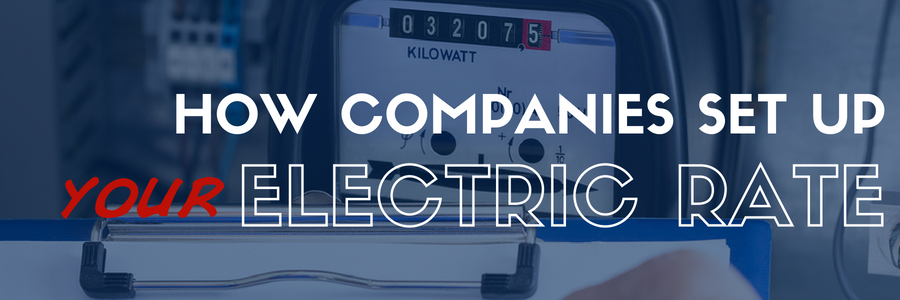
Ever wonder how your utility company settles on what to charge your company for electricity? Scrutinizing your utility bill usually does little to solve the mystery of how your provider decides your electric rate. But SM Engineering can help. Here’s a brief look at how your utility company sets up your electric rate and how you may be able to lower it.
Your Electric Bill Does Not Reflect the Cost of Electricity Production
It’s true. Utility costs are not based on the cost of production. In 1970, experts predicted that in the future, electricity usage would go way up. To prepare to meet future demand, utility companies built large generating capacities. But in the meantime, energy efficiency increased. So today, you’re not paying the true cost of electricity, but the cost of all that extra generating capacity.
Competition Makes Electric Bills Complicated
There is great pressure to deregulate electricity. Local utility companies often have the threat of a third party supplying electricity through their grid system. This is called co-generation, and it creates competition among utility companies. Utility companies feel compelled to offer customers many different rates. All these rates require complex calculations, which makes understanding your electric bill complicated. Buying electricity has become a lot more difficult over the years. Future changes to regulations could make it even more so.
Interstate Trade Rules Affect Your Electric Bill
 The Federal Energy Regulatory Commission regulates interstate transportation of electricity and gas. State agencies are also involved in intrastate dealings, and most electricity is produced intrastate. The regulatory actions these agencies take affect the cost of electricity.
The Federal Energy Regulatory Commission regulates interstate transportation of electricity and gas. State agencies are also involved in intrastate dealings, and most electricity is produced intrastate. The regulatory actions these agencies take affect the cost of electricity.
Regulatory agencies consider electricity an average cost commodity. Their pricing structures do not consider the cost of generating electricity. Prices would be more accurate if they reflected real-time usage. A real-time charge would be based on what time of day electricity is used, what the normal demand is at that time, and the production cost for that time.
Regulatory Agencies Are Cozy with Utility Companies
Many regulatory agencies reward utilities that have a higher utilization rate (in other words, how much electricity is available versus how much is used at different times of the day/month/year). If an agency coordinates utility costs statewide, the cost of electricity would be contained.
Additionally, 1986 tax laws resulted in a windfall profit to utility companies. The laws lowered utility companies’ tax rate from 50 to 30 percent. However, consumers did not benefit from this windfall.
Lower Your Electric Rate by Thinking Outside the Box
 In the past, customers bought electricity when they needed it and paid for it when the bill arrived. The only way to save, it was thought, was to reduce consumption. Today, other options are available, including:
In the past, customers bought electricity when they needed it and paid for it when the bill arrived. The only way to save, it was thought, was to reduce consumption. Today, other options are available, including:
- Own your own transformer
- Power factor at which there is no penalty
- Buy electricity at higher voltage
- Manage your demand
- Buy electricity from a source other than your own utility company
- Co-generation, if available in your state
Utility companies offer a variety of different rates. It’s your responsibility to choose the rate that is most economical for you. SM Engineering has found that 8 out of 10 electricity customers do not take advantage of the best rate available to them.
For instance, the three most common electrical rates are:
- Small general service
- General Service
- Large General Service
Small general service and general service are available to accounts that use fewer than 25 kilowatts. Either of the two rates could be the most economical depending on your business. But if you add options to these rates, such as time-of-day, controlled demand, etc., they become very complicated.
Imagine your electricity consumption is 2,000 KWH a month. Small general service costs between $95 and $250 per month. General service costs between $75 and $275 per month. Both rates would apply, but which is best? The boundaries are not clearly defined between these structures. Depending upon how your electricity is used, either of the two could be better. It’s up to you to make the choice.
Sound intimidating? It is, which is why you should contact SM Engineering to schedule your free, no-obligation electricity bill audit today. Our experts will scour your bill for savings and work with your utility company to secure you the best rate available.


